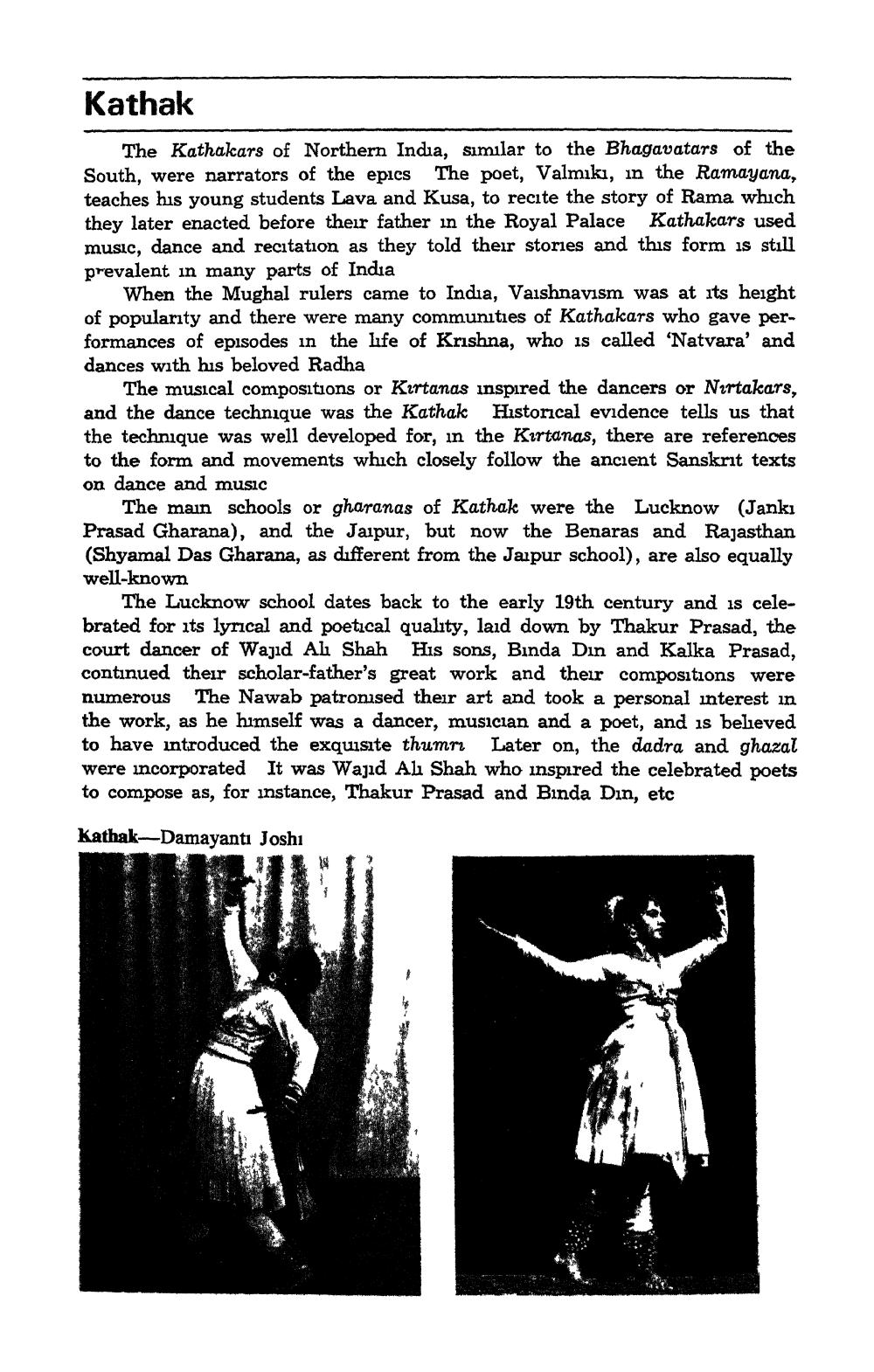________________
Kathak
The Kathakars of Northern India, similar to the Bhagavatars of the South, were narrators of the epics The poet, Valmiki, in the Ramayana, teaches his young students Lava and Kusa, to recite the story of Rama which they later enacted before their father in the Royal Palace Kathakars used music, dance and recitation as they told their stories and this form is still prevalent in many parts of India
When the Mughal rulers came to India, Vaishnavism was at its height of popularity and there were many communities of Kathakars who gave performances of episodes in the life of Krishna, who is called 'Natvara' and dances with his beloved Radha
The musical compositions or Kirtanas inspired the dancers or Nirtakars, and the dance technique was the Kathak Historical evidence tells us that the technique was well developed for, in the Kirtanas, there are references to the form and movements which closely follow the ancient Sanskrit texts on dance and music
The main schools or gharanas of Kathak were the Lucknow (Janki Prasad Gharana), and the Jaipur, but now the Benaras and Rajasthan (Shyamal Das Gharana, as different from the Jaipur school), are also equally well-known.
The Lucknow school dates back to the early 19th century and is celebrated for its lyrical and poetical quality, laid down by Thakur Prasad, the court dancer of Wajid Ali Shah His sons, Binda Din and Kalka Prasad, continued their scholar-father's great work and their compositions were numerous The Nawab patronised their art and took a personal interest in the work, as he himself was a dancer, musician and a poet, and is believed to have introduced the exquisite thumri Later on, the dadra and ghazal were incorporated It was Wajid Ali Shah who inspired the celebrated poets to compose as, for instance, Thakur Prasad and Binda Din, etc
Kathak-Damayanti Joshi




